Rose danio - Danio roseus
Scientific name: Danio roseus
Common name: Rose danio
Family: Cyprinidae
Usual size in fish tanks: 3 - 4 cm (1.18 - 1.57 inch)
014
Recommended pH range: 6.2 - 7
Recommended water hardness: 4 - 13°N (71.43 - 232.14ppm)
0°C 32°F30°C 86°F
Recommended temperature range: 22 - 27 °C (71.6 - 80.6°F)
The way how these fish reproduce: Spawning
Where the species comes from: East Asia
Temperament to its own species: peaceful
Temperament toward other fish species: peaceful
Usual place in the tank: Middle levels
Short Description
The Rose Danio (Danio roseus) is a peaceful and active schooling fish native to Southeast Asia. With their shimmering rose and silver hues, they are a delightful addition to community tanks. These fish thrive in groups of six or more, showcasing their playful and social nature. Rose Danios prefer cooler water temperatures within their range and are well-suited for aquarists of all experience levels due to their hardy and adaptable nature.
Origin
Native to Southeast Asia, Rose Danios are found in the clear, fast-flowing rivers and streams of Laos, Thailand, and Myanmar. Their natural habitats are characterized by cooler water temperatures, moderate flow, and abundant vegetation.
Tank Requirements
Rose Danios require a tank of at least 40 liters (10 gallons) to accommodate their active swimming behavior. Maintain water temperatures between 22-27°C (71.6-80.6°F), a pH range of 6.2-7, and water hardness of 4-13°N (71.43-232.14 ppm). Provide a mix of open swimming spaces and planted areas using hardy plants like Java fern or Anubias. A sandy or fine gravel substrate works best. Ensure moderate water flow to replicate their natural environment and perform regular water changes to maintain water quality.
Food and Feeding
Rose Danios are omnivorous and accept a variety of foods. Provide high-quality flakes or small pellets as their staple diet. Supplement their diet twice a week with live or frozen treats like brine shrimp, daphnia, and tubifex. Feeding them small portions multiple times a day ensures optimal nutrition and supports their active metabolism.
Compatibility
Rose Danios are peaceful and ideal for community tanks. They coexist well with other small, non-aggressive species such as tetras, rasboras, and Corydoras catfish. Avoid housing them with slow-moving or long-finned species, as their active nature may cause unintentional stress. Keeping them in groups of at least six promotes natural schooling behavior and reduces stress.
Sexing
Females are generally larger and have a stockier body shape compared to males. These differences become more apparent during breeding when females appear fuller due to their eggs.
Breeding
To breed Rose Danios, set up a dedicated breeding tank with a substrate of marbles or add Java moss or spawning mops. These materials protect the eggs by allowing them to settle into crevices or foliage. Danios typically spawn at daybreak, scattering their eggs throughout the tank. After spawning, remove the adults to prevent them from eating the eggs. The eggs hatch within 24-36 hours, and once the fry are free-swimming, feed them infusoria or finely powdered fry food, gradually transitioning to larger foods as they grow.
Lifespan
With proper care, Rose Danios can live up to 5 years. Maintaining stable water parameters, providing a nutritious diet, and minimizing stress are key to their longevity.
Pictures
Bought by aqua-fish.net from jjphoto.dk.






 Bala
Bala  Spotted
Spotted  Golden
Golden  Tinfoil
Tinfoil  Congo
Congo  Blue-barred
Blue-barred  African
African  Butterfly
Butterfly  Olivegreen
Olivegreen  Morse
Morse  Jerdon’s
Jerdon’s  Mosquito
Mosquito  Dwarf
Dwarf 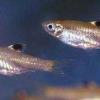 Eyespot
Eyespot  Goldfish
Goldfish  Penguin
Penguin  Siamese
Siamese  Koi
Koi  Pearl
Pearl  Glowlight
Glowlight  Crossbanded
Crossbanded 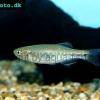 Yoma
Yoma  Orange
Orange 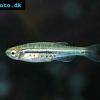 Dwarf
Dwarf  Zebra
Zebra  Red
Red  Arulius
Arulius  Tambraparni
Tambraparni  Fiveband
Fiveband  Bengal
Bengal 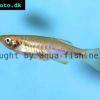 Tiger
Tiger  Malabar
Malabar  Queen
Queen  Hora
Hora  False
False  Redtail
Redtail  Rainbow
Rainbow  Flying
Flying  Garra
Garra  Black
Black 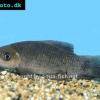 Purple
Purple  Burmese
Burmese  Dwarf
Dwarf  Isok
Isok  Rosy
Rosy 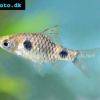 Two
Two 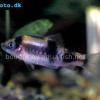 Melon
Melon 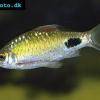 Black-spot
Black-spot  Golden
Golden  T-Barb
T-Barb  Ruby
Ruby  Checkered
Checkered  Rhomb
Rhomb  Gold
Gold  Tiger
Tiger  Cherry
Cherry  Brittan’s
Brittan’s 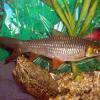 Greater
Greater  Long-band
Long-band  Twospot
Twospot  Reticulate
Reticulate  Cherry
Cherry  Denison
Denison  White
White  Lambchop
Lambchop  Harlequin
Harlequin